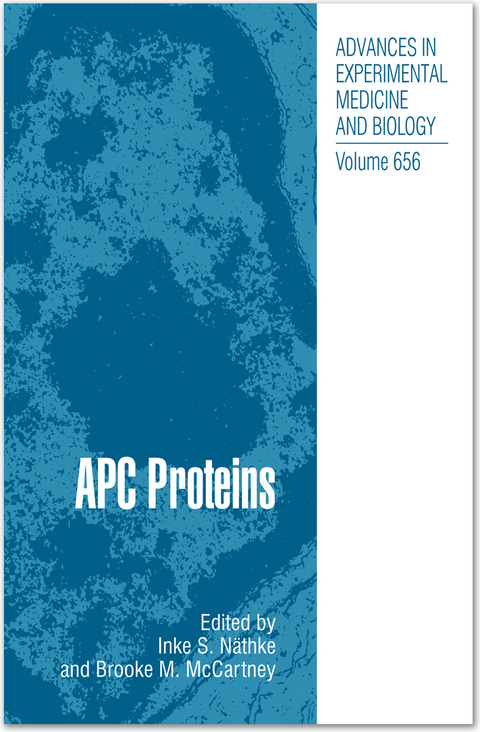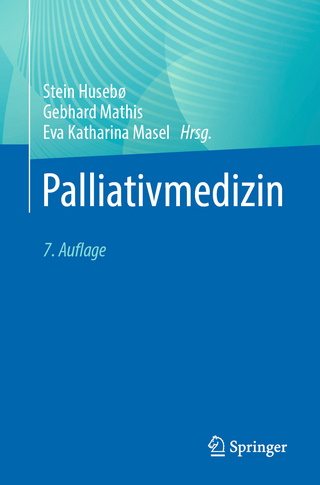
APC Proteins
Springer-Verlag New York Inc.
978-1-4614-2451-2 (ISBN)
The initial identification of the Adenomatous polyposis eoli (Ape) gene as the site of mutations in familial adenomatous polyposis (FAP) was described in 1 1992. ,2 A causal relationship between Ape mutations and intestinal tract tumours was confirmed three years later with the establishment ofthe Min mouse model) These mice are heterozygous forApe and develop numerous intestinal tumours that mimic FAP. Subsequently, Ape has emerged as the most commonly mutated gene in colorectal cancerwith reports varying between 50-80% ofsporadic tumours car- rying such mutations. The search for how mutations in Ape initiate and/or support progression oftumours in the intestinal tract has revealed that the Ape protein is a multifunctionalparticipant in a diverse array ofcellular functions. By collecting and assembling the chapters inthisbook, we aimed toprovide an overview of the diverse functions performed by the Ape protein. As summarised in a short final chapter by Trainer,heterozygosityofApe leads to a number ofextracolonic manifestations that further support this emerging picture ofthe Ape protein as an active contributor to many different cellular functions.
The first recognised function of Ape was its role in Wnt signalling. o This function is one of the driving forces for how mutations in Ape ensure that cells remain proliferative. Many of the molecular details of this pathway have been discovered and are described in the first chapter by Kennell and Cadigan.
Inke Näthke is the professor of Epithelial Biology at the University of Dundee. Her research interest is to determine how specific molecular changes produce changes in cells and ultimately in whole tissues during early stages of tumourigenesis. Her focus is on colorectal cancers but the common epithelial origin of most tumours makes this work relevant to many other organs. Her work has led her to examine not only how cells move and divide but also how they know where they are, and how they work together to build a functional tissue. Professor Näthke received her training at San Jose State University, the University of California San Francisco, Stanford and Harvard Medical Schools. Brooke McCartney is an Assistant Professor of Biological Sciences at Carnegie Mellon University. She is interested in how signaling pathways regulate the cytoskeleton and how this leads to changes in cytoskeletal and tissue architecture. The focus of her lab is therole of APC proteins and Wnt signaling in morphogenesis, both at the level of the cytoskeleton and at the level of tissues, using Drosophila melanogaster as a model system. Dr. McCartney received her training at Mount Holyoke College, Duke University, and the University of North Carolina at Chapel Hill.
APC and ?-Catenin Degradation.- Nuclear APC.- APC in Cell Migration.- The APC-EB1 Interaction.- The Role of APC in Mitosis and in Chromosome Instability.- Role of APC and Its Binding Partners in Regulating Microtubules in Mitosis.- The Adenomatous Polyposis Coli Tumor Suppressor and Wnt Signaling in the Regulation of Apoptosis.- APC and Its Modifiers in Colon Cancer.- Tissue-Specific Tumour Suppression byAPC.- Extra-Colonic Manifestations of Familial Adenomatous Polyposis Coli.
| Reihe/Serie | Advances in Experimental Medicine and Biology ; 656 |
|---|---|
| Zusatzinfo | 3 Illustrations, color; 22 Illustrations, black and white; 148 p. 25 illus., 3 illus. in color. |
| Verlagsort | New York, NY |
| Sprache | englisch |
| Maße | 155 x 235 mm |
| Themenwelt | Medizin / Pharmazie ► Medizinische Fachgebiete ► Onkologie |
| Medizin / Pharmazie ► Studium | |
| Naturwissenschaften ► Biologie ► Biochemie | |
| Schlagworte | Protein |
| ISBN-10 | 1-4614-2451-8 / 1461424518 |
| ISBN-13 | 978-1-4614-2451-2 / 9781461424512 |
| Zustand | Neuware |
| Informationen gemäß Produktsicherheitsverordnung (GPSR) | |
| Haben Sie eine Frage zum Produkt? |
aus dem Bereich


